I’m in the Japan Times this week with a lesson about how to make nattō: “One man’s journey to perfect homemade nattō.”
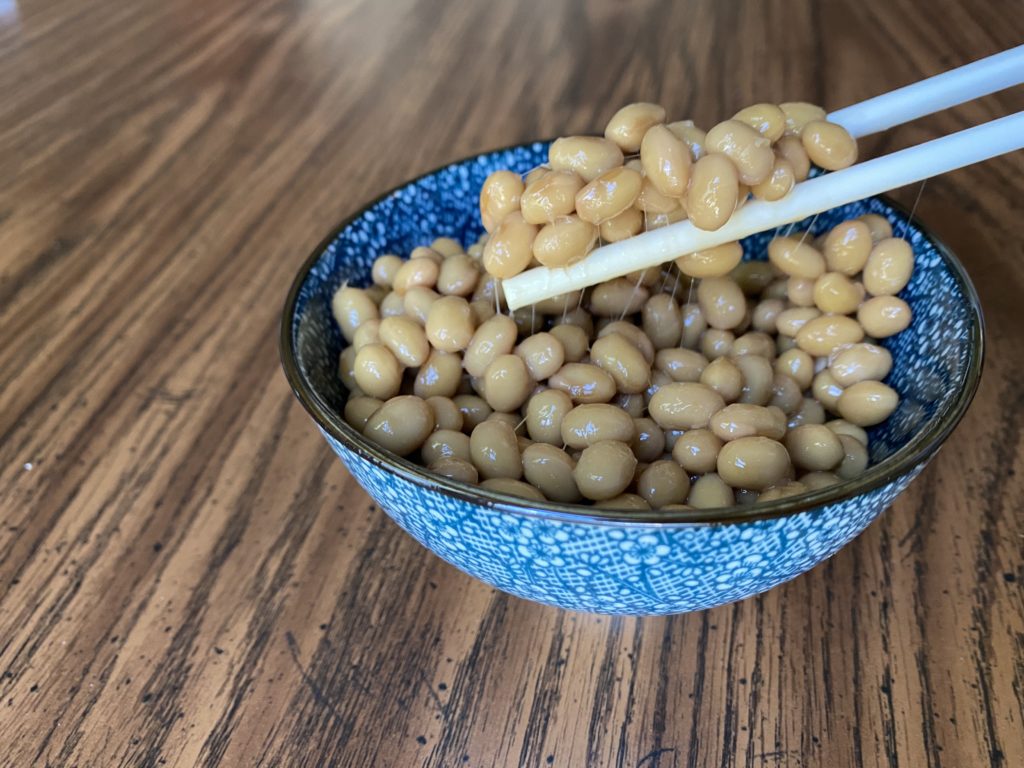
A few weeks back I saw some folks discussing nattō on Twitter, which made me realize that I hadn’t made Japanese breakfast for a while. There was a stretch in 2019 after a business trip to Japan when I ate 和食 breakfast every day for about six months or so.
I had enough to put together miso soup and salmon pretty easily, and I realized that I probably had the equipment to make nattō. I started Googling around a little, and, sure enough, I found Japanese recipes for making nattō using the yogurt setting on an Instant Pot.
Like yogurt, nattō is fermented by bacteria and needs to be held at warm temperatures for enough time for the germs to do their thing. I’ve been brewing beer and making yogurt long enough to have a decent sense of how things work, so I decided to give it a shot. It’s not all that hard!
I found the soybeans pretty easily at one of the Asian market’s near me, but they didn’t have frozen nattō. I put my quest on pause until I saw Hiroko Tabuchi tweet out a picture of 納豆素 from Yuzo Takahashi Laboratory, which was conveniently available on Amazon at the time. The spores are currently sold out but worth looking out for, and there must be somewhere else to purchase them online.
Once you have the soybeans, the spores, and an Instant Pot, you’re just about good to go. Here’s how I did it:
1. Soak the soybeans overnight.

I recommend starting with 100g. Most recipes will recommend 500g, which is far too much. 250g was enough for two weeks’ worth of breakfast. The soybeans will expand and soak up some of the water.
2. Cook the soybeans.
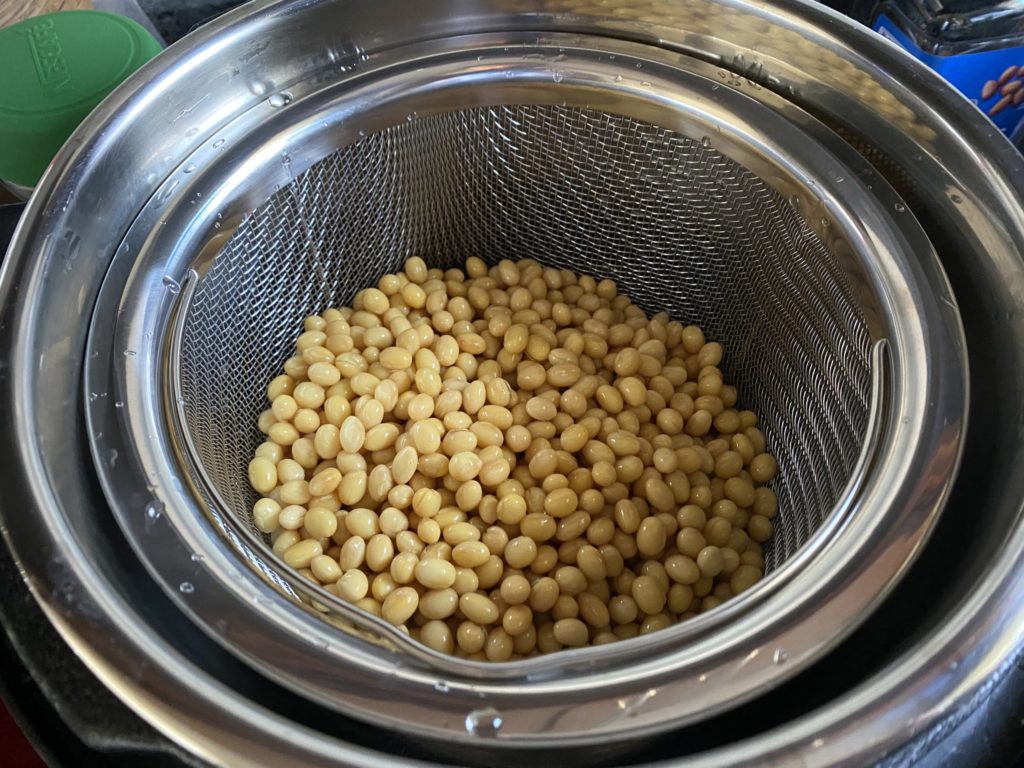
I used a steaming basket with 1.5 cups water in the bottom of the IP, but you could just as easily cook the beans directly in the IP container, in which case you’d need much more water.
If you’re using the steaming basket, you probably should cook on manual for 45-55 minutes, depending on how soft you want your beans. I haven’t perfected the softness yet. The first time I tried, I steamed them for 30 minutes and they were a little firm, so I had to add an additional 10 minutes. I think 55-60 minutes would work. [Update 8/22/20: I did 70 minutes on Manual and they came out perfect.]
If you’re boiling the beans, then I think 30-40 minutes is probably fine in the IP.
3. Transfer cooked beans into a sanitized container.
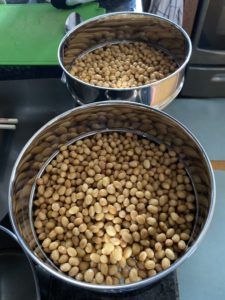
Everything from this point onward needs to be totally sanitized so that you’re not at risk of growing anything other than the nattō bacteria.
You can rinse everything with a sanitizer of some sort like a diluted bleach solution (or StarSan or Iodophor if you happen to be a homebrewer like me). If you’re using a stainless steel container for the beans, you can alternatively give it a quick steam in the IP to nuke everything on it and make sure it’s totally sanitized.
Pot-in-pot stainless steel pots are useful for this. There are two pots in the picture because I made 250g the first time I made them and had to split them up so that the beans didn’t get too deep.
4. Add spores to sanitized water.
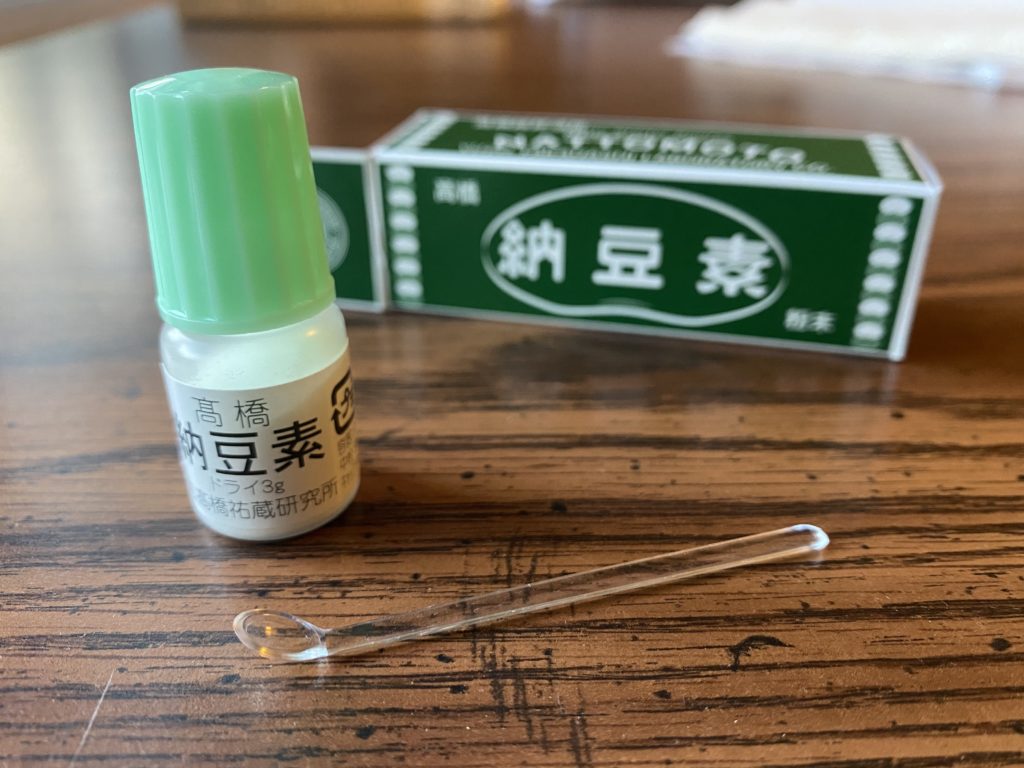
Microwave 10mL of water for a minute or so until it boils, and then let it cool until it’s warm to the touch but not uncomfortably so (around 100F/37C). Then add 0.1g of spores to the water using the special spoon included with the vial of spores. Swirl up the spores in the water.
5. Add the spore water to the soybeans.
Pour the water on the beans and give it a stir with a sanitized spoon.
6. Ferment the soybeans.
Put your container in the IP and set it to the yogurt setting for 24 hours. Now you just wait.
You can look in, but I’d suggest resisting until at least 12 hours in to ensure that the nattō bacteria have a good head start and can outcompete anything else that might sneak in when you’re taking a look.
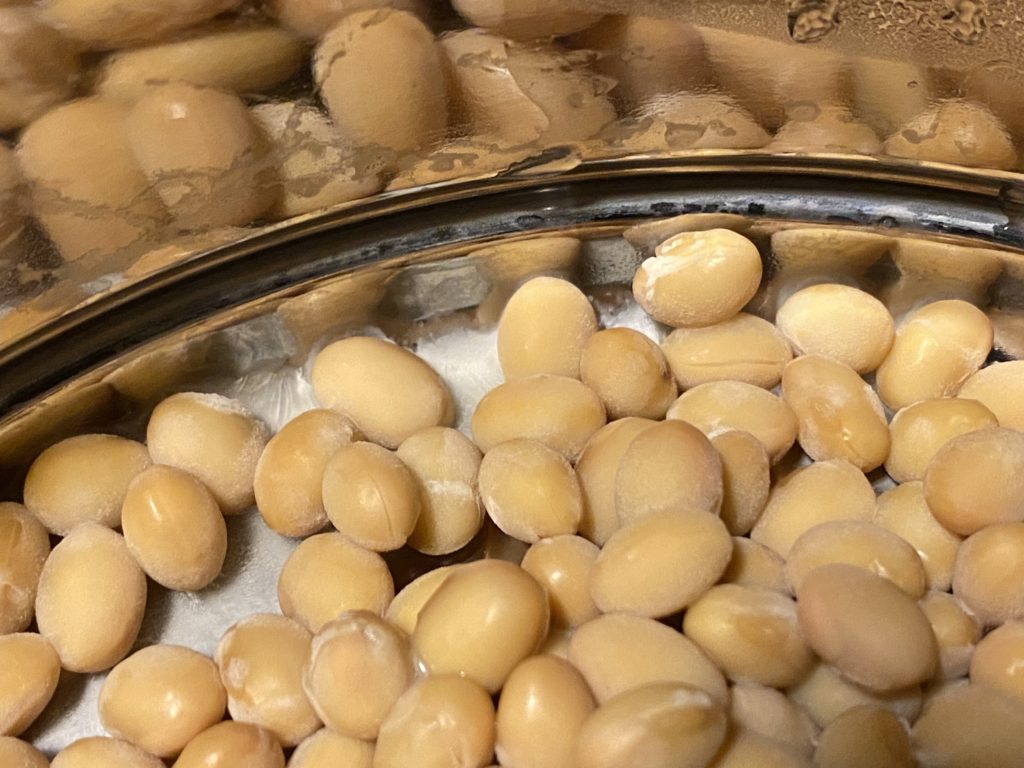
By 12-16 hours you should see the whitish film developing and notice that pungent nattō aroma. The beans will be ready by 24 hours.
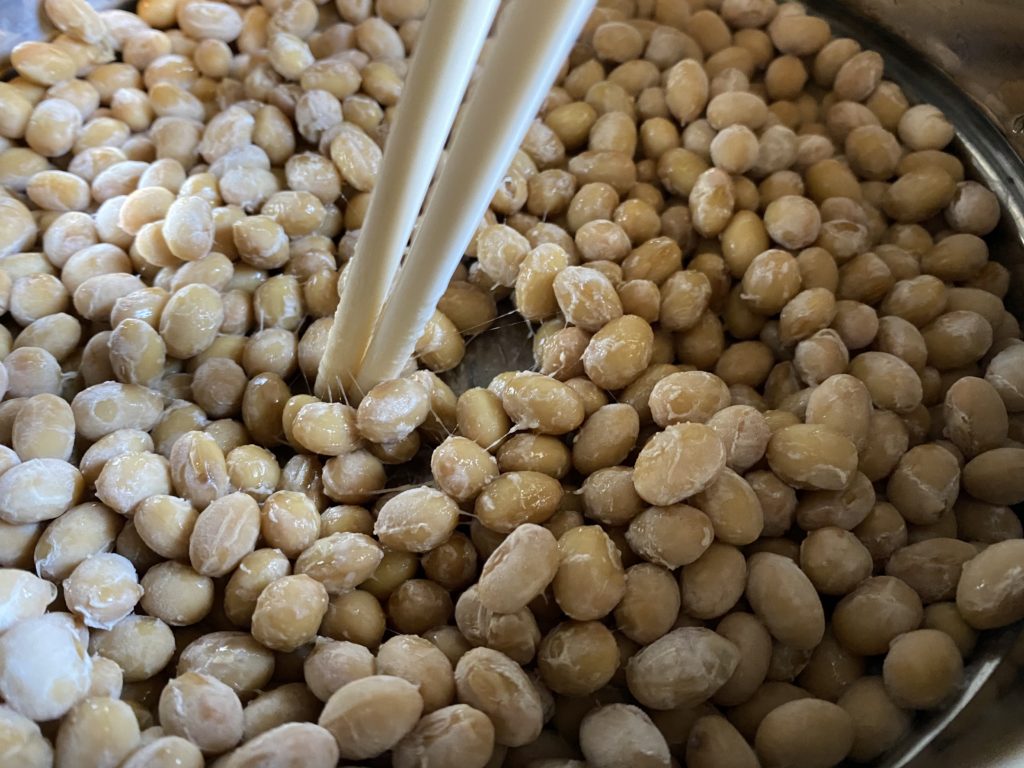
7. Refrigerate the nattō overnight.
Pour the nattō into a food-safe container, and refrigerate it overnight. It’s ready to serve!
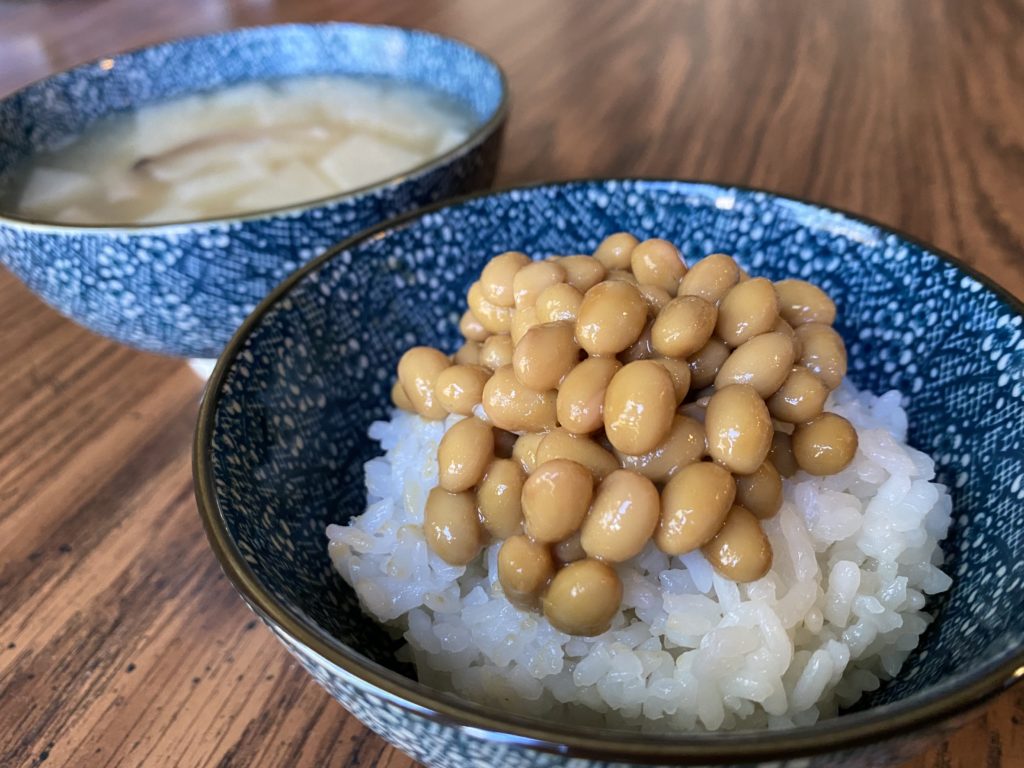
S&B Oriental Mustard is relatively easy to find and makes really good karashi. Alternatively you can check out my nattō experiments video from ancient history for some other recipe options. I think I’ll have to try the avocado version again sometime soon…
